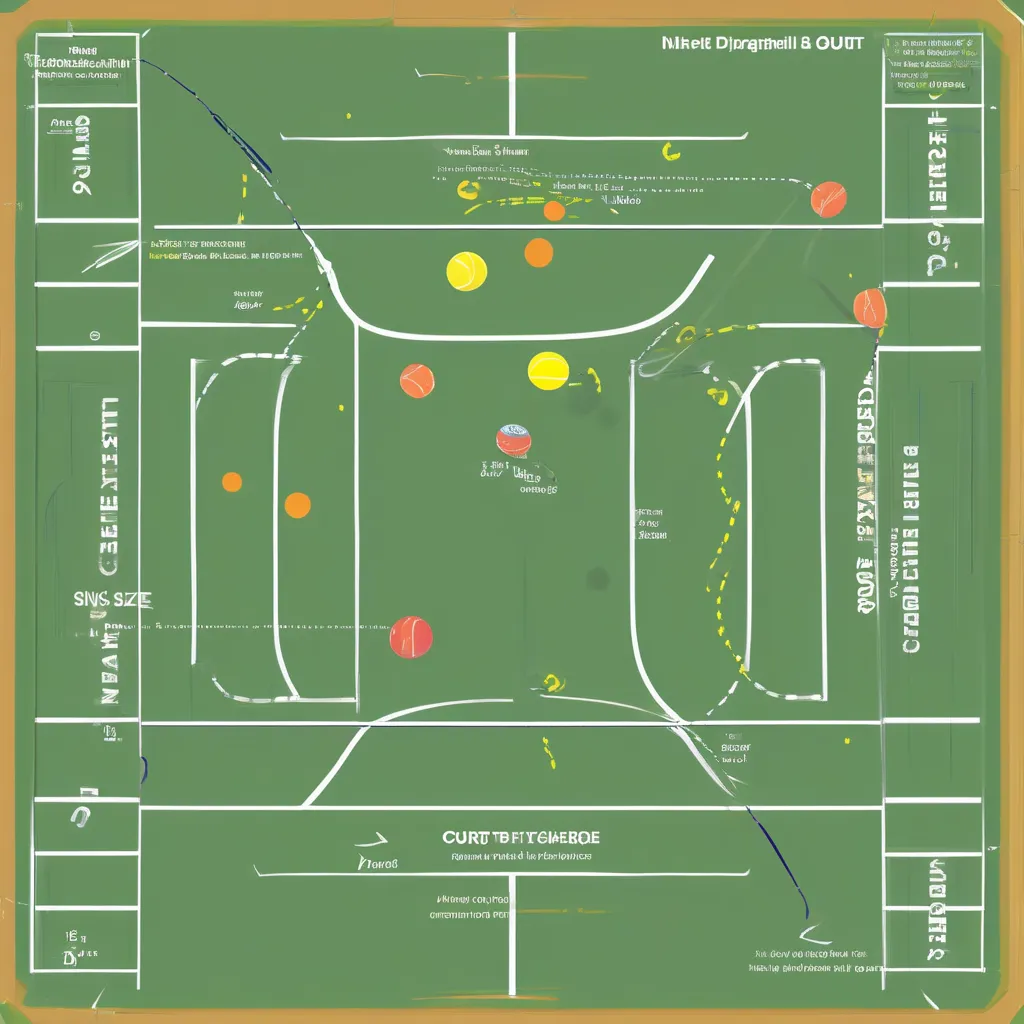Table of Contents
Introduction to Pickleball Court Dimensions and Layout
Understanding the standard dimensions and layout of a Pickleball court is crucial for anyone looking to play or set up the game. Whether you’re setting up an indoor or outdoor court, adhering to the official measurements ensures a fair and enjoyable experience for all players. This complete guide to Pickleball court dimensions and layout will provide you with all the necessary details to master the setup.
Official Pickleball Court Dimensions
The official Pickleball court dimensions are standardized to ensure consistency and fairness in the game. Here are the key measurements:
- Court Size: The court measures 20 feet wide by 44 feet long, the same dimensions used for both singles and doubles play.
- Non-Volley Zone (The Kitchen): A 7-foot area on either side of the net where volleys are not allowed.
- Service Courts: The area on either side of the centerline, divided into left and right service courts by the centerline and the non-volley zone line.
Accurate court dimensions are essential for maintaining the integrity of the game and ensuring that all players are on equal footing. Understanding Pickleball court dimensions and layout is the first step to setting up your playing area correctly.
 Pickleball Court Dimensions
Pickleball Court Dimensions
Net Height and Specifications
The net height is another important aspect of the Pickleball court layout:
- Net Height at Sidelines: 36 inches.
- Net Height at Center: 34 inches.
- Net Length: The net should extend 22 feet from one post to the other.
Ensuring the net is set at the correct height is essential for fair play and adherence to the official rules. Proper net setup is a key part of mastering Pickleball court dimensions and layout.
Indoor vs. Outdoor Court Layouts
While the dimensions of indoor and outdoor Pickleball courts are the same, there are some considerations to keep in mind for each setting:
Indoor Courts
- Typically found in gymnasiums or multi-purpose halls.
- Floor surfaces are usually made of wood or synthetic materials.
- Lighting is crucial; ensure the court is well-lit to avoid visibility issues.
Outdoor Courts
- Often set up on tennis courts or dedicated Pickleball courts.
- Surface materials can include concrete, asphalt, or specialized outdoor sports surfaces.
- Consider factors like wind, sun glare, and weather conditions when setting up an outdoor court.
Whether you are setting up an indoor or outdoor court, understanding the unique requirements of each environment is essential for optimal Pickleball court dimensions and layout.
Marking the Court
Properly marking the Pickleball court ensures clear boundaries and helps players adhere to the rules. Here’s how to mark the court:
- Boundary Lines: Use white or yellow tape or paint to mark the edges of the court. The lines should be 2 inches wide.
- Centerline: This line divides the service areas and should extend from the non-volley zone line to the baseline.
- Non-Volley Zone Line: Mark a line 7 feet from the net on both sides, indicating the non-volley zone.
Clear and accurate markings are critical for maintaining the standard Pickleball court dimensions and layout. This helps ensure that games are played fairly and consistently.
Setting Up a Temporary Court
If you don’t have access to a permanent Pickleball court, you can set up a temporary court. Here’s what you need:
- Portable Net: A collapsible net that can be easily assembled and disassembled.
- Chalk or Tape: For marking boundaries on any flat surface.
- Measuring Tape: To ensure accurate court dimensions.
Temporary courts can be set up in driveways, parking lots, or any large flat area, making Pickleball accessible to everyone. Mastering the setup of temporary courts is part of understanding Pickleball court dimensions and layout.
Resources for Further Learning
For more detailed information and resources on Pickleball court dimensions and setup, visit these websites:
Conclusion
Understanding the dimensions and layout of a Pickleball court is fundamental for players, coaches, and organizers. Whether you’re setting up a court for casual play or preparing for a tournament, adhering to the official guidelines ensures a consistent and enjoyable experience. With this complete guide, you’re now equipped with the knowledge to set up a Pickleball court that meets all the standards and enhances the gameplay experience. Mastering Pickleball court dimensions and layout will greatly benefit your overall experience with the game.
Frequently Asked Questions
- What are the dimensions of a Pickleball court? The standard dimensions are 20 feet wide by 44 feet long.
- How high should the net be? The net should be 36 inches high at the sidelines and 34 inches high at the center.
- What is the non-volley zone? The non-volley zone, or “kitchen,” is a 7-foot area on either side of the net where volleys are not allowed.
- Can Pickleball be played on a tennis court? Yes, tennis courts can be adapted for Pickleball by using temporary nets and markings.
- What surfaces are suitable for Pickleball? Pickleball can be played on various surfaces, including concrete, asphalt, wood, and synthetic materials.
- How do I mark a Pickleball court? Use white or yellow tape or paint to mark the boundaries, centerline, and non-volley zone lines.